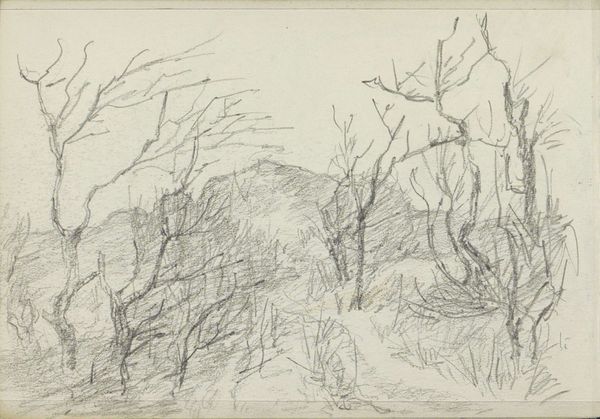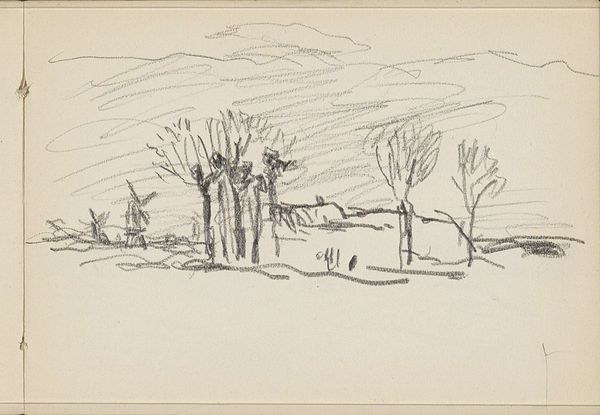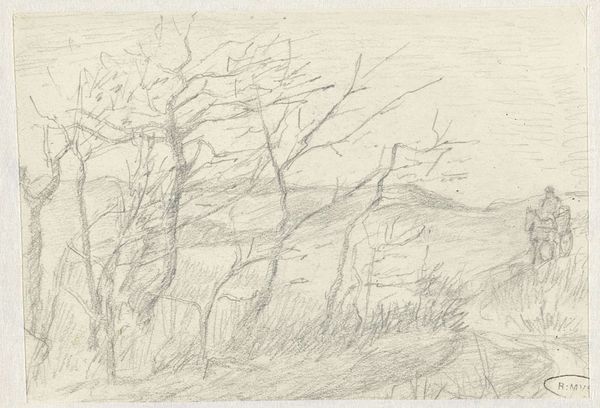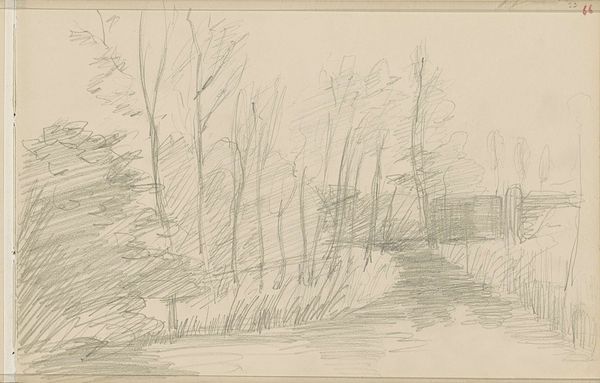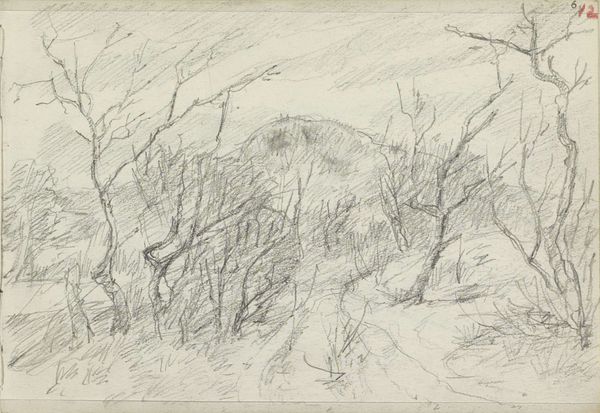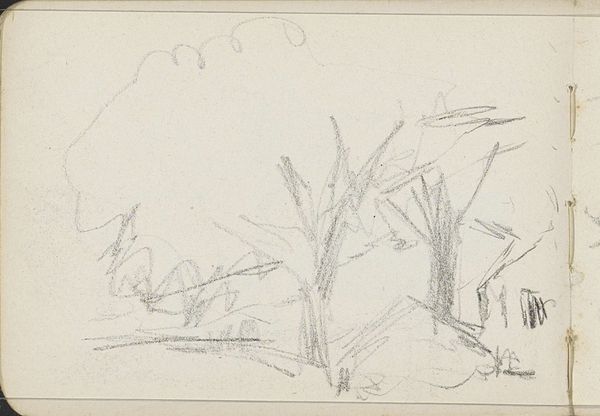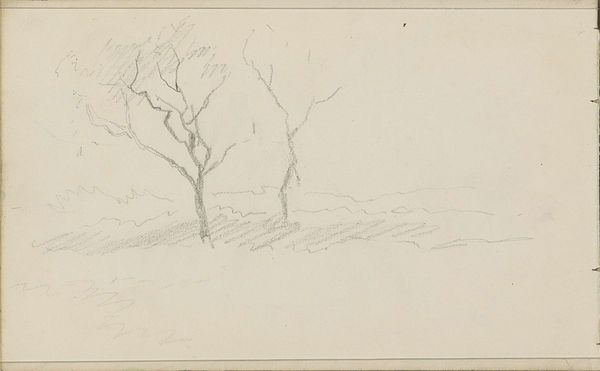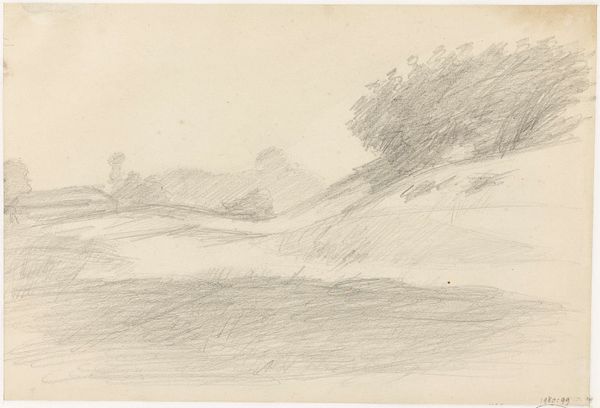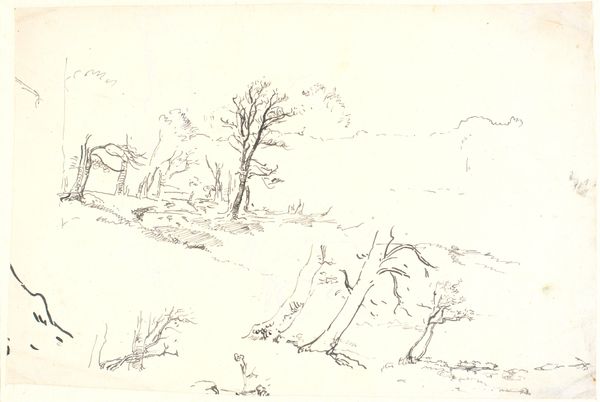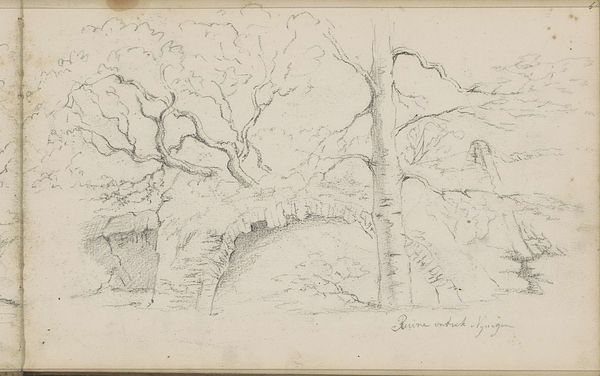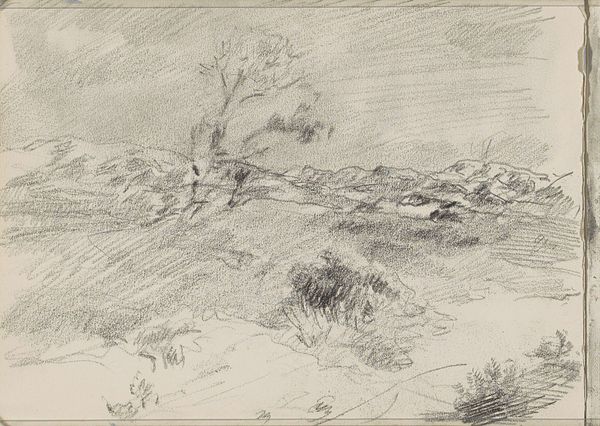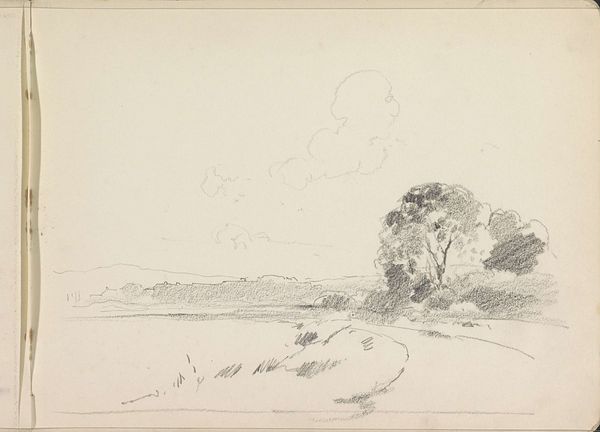
drawing, pencil
#
drawing
#
dutch-golden-age
#
pencil sketch
#
landscape
#
figuration
#
pencil
#
realism
Copyright: Rijks Museum: Open Domain
Editor: Right now, we’re looking at "Landscape with Trees and a Flock of Sheep" by Anton Mauve, likely created between 1848 and 1888 using pencil. It’s a fairly quick sketch. I’m struck by how raw and immediate it feels. What catches your eye about it? Curator: The immediacy comes directly from Mauve’s application of the pencil to paper, right? We see the marks of its production very clearly. But beyond that, consider the role of landscape in 19th-century Dutch art. How did the burgeoning industrial revolution affect artistic output? The materiality of this drawing – the mass-produced pencil, the commercially available paper – speaks to a changing landscape for artists, too. How does this compare to other landscape drawings of that time? Editor: I see what you mean about the changing role of materials. Most of the paintings in the Dutch Golden Age were far more focused on idealized or biblical themes. It’s almost as if using pencil connects it more to the working class instead of oil paints that the elite commissioned. It seems like he’s heading toward the kind of artistic expression the Impressionists were beginning at this time, almost. But what's up with the subject matter? Curator: Precisely. But why would depicting rural scenes of sheep grazing gain popularity now? What purposes did such scenes serve in this moment of urbanization and industrial transformation? Think about labor, rural-to-urban migration, and the desire for a particular kind of idyllic, consumable image of country life, where even sheep farming looked quaint and romantic rather than demanding and laborious. Is this really about a faithful depiction of a rural landscape, or something else? Editor: So it’s less about nature itself and more about… longings, desires, or an invented idea about rural life in an industrialized world? That adds another layer of understanding to the drawing! Thanks! Curator: Exactly. Thinking about the context of artistic production and the culture industry adds so much! I found this illuminating as well.
Comments
No comments
Be the first to comment and join the conversation on the ultimate creative platform.

